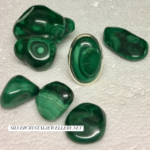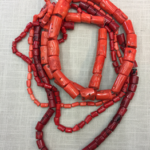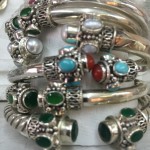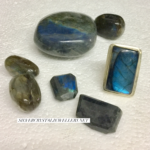are diamonds cursed?
Unfortunately, some believe these famous prizes may carry their own price for ownership. Looking back at the first appearance and their subsequent journeys has put a question in the minds of the superstitious as to whether loose diamonds are cursed or not. Even today there is debate. While myth may be debunked by history, the legend, for many of these diamonds, lives on. But be careful of a diamond engagement ring, especially if the diamond looks too good to be true.
Koh-i-Noor Diamond
The Koh-i-Noor Diamond, though perhaps not the most famous of the six gems, has the most recorded history. According to legend, the "Mountain of Light" was stolen from the god Krishna who was asleep at the time and first appeared in Mogul chronicles as part of captured treasure in 1304 where it remained with the emperors until 1739.
Unfortunately, when Delhi was sacked by the Persians, the Mogul emperor at the time attempted, unsuccessfully thanks to a member of his harem, to hide the diamond in his turban. The Persian Nadir Shah took the turban from the neck up and gave the diamond its name in wonder.
The diamond stayed with the Persians for another 110 years before it was acquired by the British East India Company after the Sikh wars. Luckily for Queen Victoria, the the cursed diamond seemed to be having more bad luck for her male counterparts. Since 1911, the now 109 carat diamond has been part of the coronation crowns of the Queen consorts, hopefully taking away any "curse" on the royal males.
Hope Diamond
Possibly the world’s most well known diamond, the Hope Diamond at one time was reported to have weighed in at more than 112 carats. However, the curse on this rare large blue diamond supposedly began after it was popped out of the eye socket of a statue of the Hindu goddess Sita in India. This allegedly caused the diamond to be cursed and any owner to have either death or misfortune befall them.
Legend and history cross paths for the first time at the acquisition of the diamond. According to historical accounts, French Jeweler Jean Baptiste Tavernier traveled throughout India and purchased the large diamond, which was allegedly dug out of the Kollur mine in Golconda. According to legend, he stole the diamond from the statue and was torn apart by wild dogs in Russia after he sold the jewel.
However, according to historical accounts, Tavernier made his way back to France in 1668 with the diamond where he sold it to King Louis XIV along with a large quantity of other diamonds. After being made a nobleman, Tavernier died at 84 in Russia of unknown causes.
From the more than 112-carat diamond, a new diamond was cut to a little more than 67 carats and dubbed the "Blue Diamond of the Crown." A few generations later, Louis XVI was crowned king with Marie Antoinette at his side. According to legend, Marie Antoinette heads was cut off whilst her neck was adorned with said diamond.
Soon after the French Revolution, the Hope Diamond was stolen with many other crown jewels. The other jewels were recovered, and the Hope Diamond surfaced again in London about 22 years later. By 1823, English jeweler Daniel Eliason owned the gem that was supposedly once the "Blue Diamond of the Crown."
According to historical accounts, the diamond that Eliason owned was the French royals’ diamond re-cut to 44 carats to hide its origins. And years later, it was once again in royal hands, those of King George IV, when he purchased it from Eliason. It was subsequently sold to pay off debts. The legend continued to grow from there.
Henry Philip Hope was soon in possession of the diamond, which took his family name. However, the curse supposedly hit many members of his family causing the family to become bankrupt. But according to historical accounts, it was gambling and Francis Hope’s own misfortunes that caused the family’s bankruptcy. Francis, the great grand nephew of Henry, sold the diamond in 1901.
The Hope Diamond was purchased by Simon Frankel, an American jeweler, but wound up in Frenchman Pierre Cartier’s hands years later. Cartier knew of a rich American, Evalyn Walsh McLean, who told him that objects usually considered bad luck turned into good luck for her. After the jewel was once again reset, McLean purchased the diamond.
However, it may not have been such good luck for her. Her first son, Vinson, was killed in a car accident at 9; her daughter committed suicide at 25; and McLean’s husband was declared insane and confined until he died in 1941.
Upon her death, in 1949 the diamond was sold to pay off old debts to Harry Winston, a New York jeweler. Winston donated the Hope Diamond to the Smithsonian Institute in 1958. Some people believe it was to avert the curse; others say it was because Winston wanted the rare blue diamond to be the focal point of a newly established gem collection.
Black Orlov
The last of our trio of "cursed" diamonds is the Black Orlov. Known as "the Eye of Brahma," this black diamond was discovered in India in the early 1800’s. According to legend and like the first two diamonds, the 195-carat Black Orlov was allegedly found in a Hindu idol at a shrine near Pondicherry, India, where it was stolen by a Hindu monk. This action supposedly summoned a malicious spirit to embrace the Eye and the Eye’s owners.
The "cursed" jewel took its name from Princess Nadia Vyegin-Orlov in the late 1800’s. Coincidentally, the diamond was named the Black Orlov because of its "natural fancy black color but also to differentiate it from the Orlov Diamond, a 189.6 carat white diamond with its own storied past.
According to an Associated Press article, Orlov leapt from a building in an apparent suicide in Rome, Italy, on Dec. 2, 1947, after running from the Russian Revolution and selling off her family jewels.
Russian Princess Leonila Galitsine-Bariatinsky also previously owned the Black Orlov. In a disturbing coincidence in November 1947, Galitsine-Bariatinsky also committed suicide by leaping from a building.
Some fifteen years earlier, J.W. Paris imported the Black Orlov into the United States and after securing the sale of the diamond also leapt to his death on April 7, 1932. After the two Russian princesses committed suicide, supposedly the curse was broken when Charles S. Winson, another jeweler in New York, purchased the Black Orlov on Friday, May 13, 1949.



